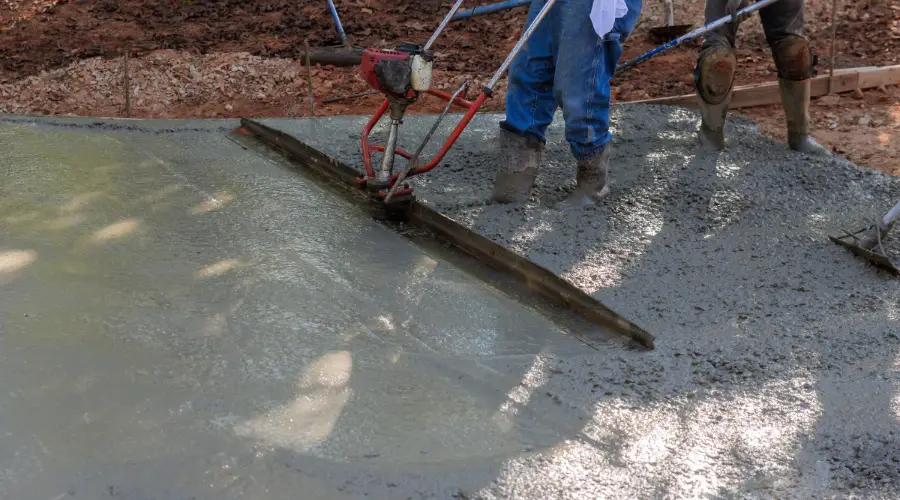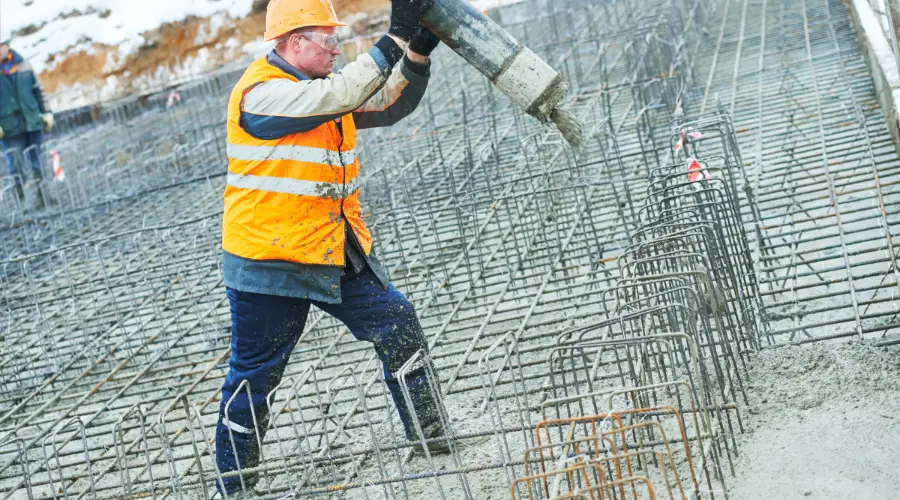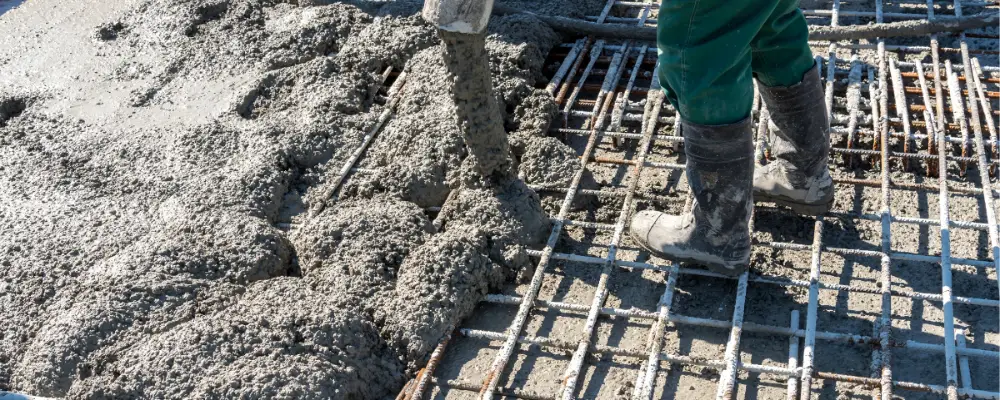Building a strong, dense, and durable structure is necessary for any construction process. Concrete compaction plays a major role in giving the necessary robust characteristics and the desired physical properties. This blog explores concrete compaction, its importance, applications, and methods.
What is Concrete Compaction?
Concrete compaction is crucial in constructing a concrete structure, to keep it denser and stronger. It is the process of removing air voids from the freshly poured concrete and improving the bonding between aggregates and cementitious components.
Purpose of Concrete Compaction
- The primary purpose of concrete compaction is to remove air voids from the freshly poured concrete.
- It improves the compressive strength of the concrete structure by 50% and helps it withstand heavy loads.
- The denser structure reduces water ingress, and protects the structure from all kinds of environmental and chemical attacks, thus improving the durability.
- Reducing the voids helps in close bonding between reinforcement and concrete.
- It prevents the formation of honeycombing on the structure, that makes the structure weak.
- It minimises the shrinkage and creep characteristics of the concrete.
- It provides a smooth and finished look to the structure, making it more pleasing.
Methods of Concrete Compaction
Manual Compaction

It is the process of compacting the concrete manually using a rod or wooden stick. It can be done using three methods:
- Rodding is the process of poking the concrete with a long rod at corners and edges.
- Ramming is generally used for compacting plain concrete on the ground surface.
- Tamping is used for thin concrete surfaces such as floors or pavements.
Mechanical Compaction

As the name suggests, this method uses mechanical equipment to compact the concrete. This is one of the most common methods in the modern construction field and has better efficiency than manual methods.
- Internal Vibrators are inserted directly into the concrete and the vibration generated helps in effective compaction for higher volumes.
- External Vibrators are used for places where internal vibrators cannot be inserted. They provide the vibration outside the formwork, for effective compaction.
- Surface Vibrators are used for flat surfaces such as slab and pavement work. These vibrators are kept on the surface of the concrete and provide shaking movement to remove voids.
Applications of Proper Concrete Compaction
- Concrete compaction is crucial for foundations for all sorts of buildings, to help withstand heavy loads, and reduce the risk of cracking or settling over time.
- It is used in the construction of bridges to withstand traffic and environmental conditions, by protecting the structure against cracks, leaks, and corrosion.
- It is necessary to pave roads, walkways, and runways to provide strong, smooth, and durable pavement for seamless transition, and effective load distribution.
- It is used in precast concrete manufacturing, to provide high-quality structural elements of precise dimensions, and smooth finishes.
- In reinforced concrete structures, compaction is crucial in increasing the bonding between the concrete and the reinforcement steel.
- In retaining walls, proper compaction provides the necessary strength and stability to withstand external pressure effectively.
Process of Concrete Compaction
Preparation
Ensure that the concrete mix poured is properly mixed without any slump, and formwork is properly installed, to minimise segregation. Gather all the tools necessary for compaction at the construction site.
Concrete Pouring
The freshly prepared concrete is poured into the formwork. It is necessary to ensure that the concrete is freely flowing throughout the formwork evenly, without any interruption, or leakage.
Initial Compaction
After pouring the concrete up to a certain height, initial compaction for 3 to 5 seconds is done to prevent slumping and provide a level surface. This is generally carried out using manual or mechanical methods such as rodding, tamping, or using concrete vibrators. It is done to agitate the concrete and expel entrapped air.
Final Compaction
After initial compaction, an immersion vibrator is placed into the concrete for about 7 to 15 seconds. The final compaction is done to completely eliminate the trapped air bubbles in the concrete and help achieve the maximum density.
Curing
After compaction is done, the concrete surface is kept idle for curing to achieve the required strength and stability. Formworks are removed once the concrete structure develops stability to stand on its own.
Conclusion
In summary, concrete compaction is a crucial process in creating strong, safe, and long-lasting structures, by removing air voids and improving workability. Compaction can be done both manually and mechanically and has a wide application in almost every construction process using concrete.
FAQs
A poorly compacted concrete structure could develop honeycombing, uneven surfaces, cracks, hollow spots, and settlements. In the longer run, it may cause durability problems, causing permeability, corrosion, poor load-bearing capacity, and more.
Rodding provides better precision, deeper penetration, and reduced surface disturbance, and is used for compacting all forms of concrete structures, compared to tamping.
Tools and equipment used for concrete compaction include steel rods, metal tampers, sledgehammer heads, needle vibratos, surface vibrators, formwork vibrators, and table vibrators.

